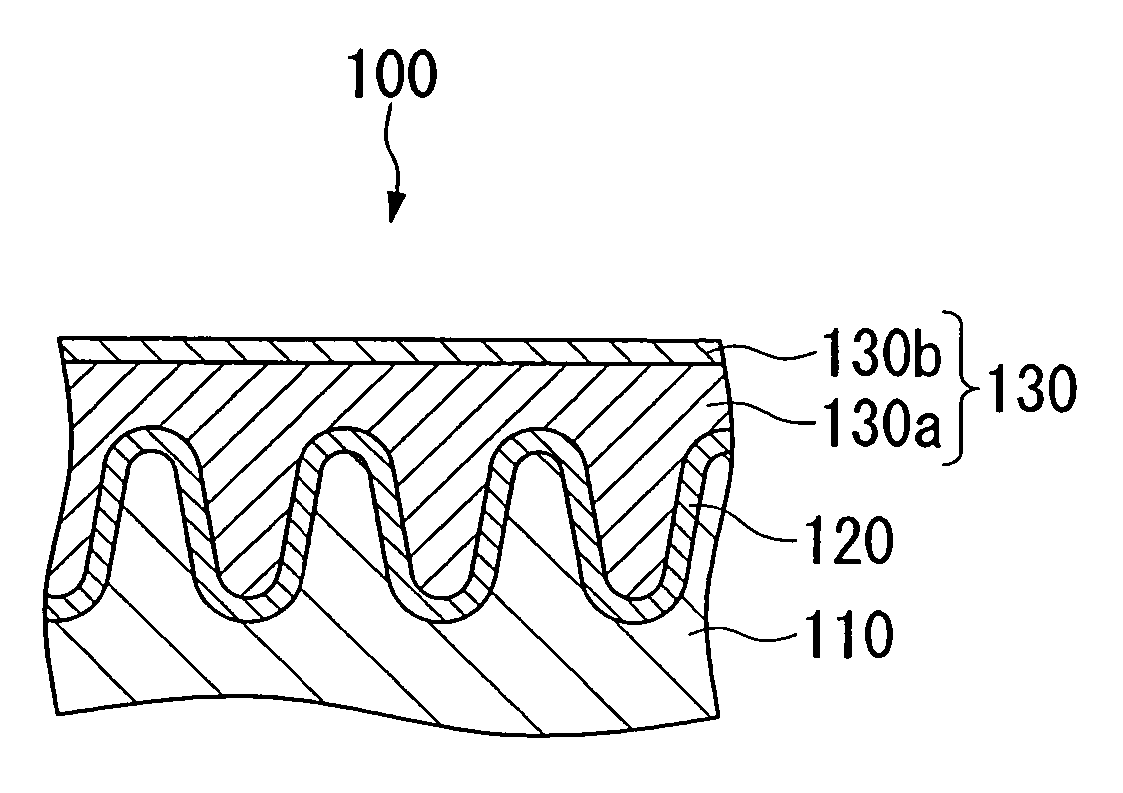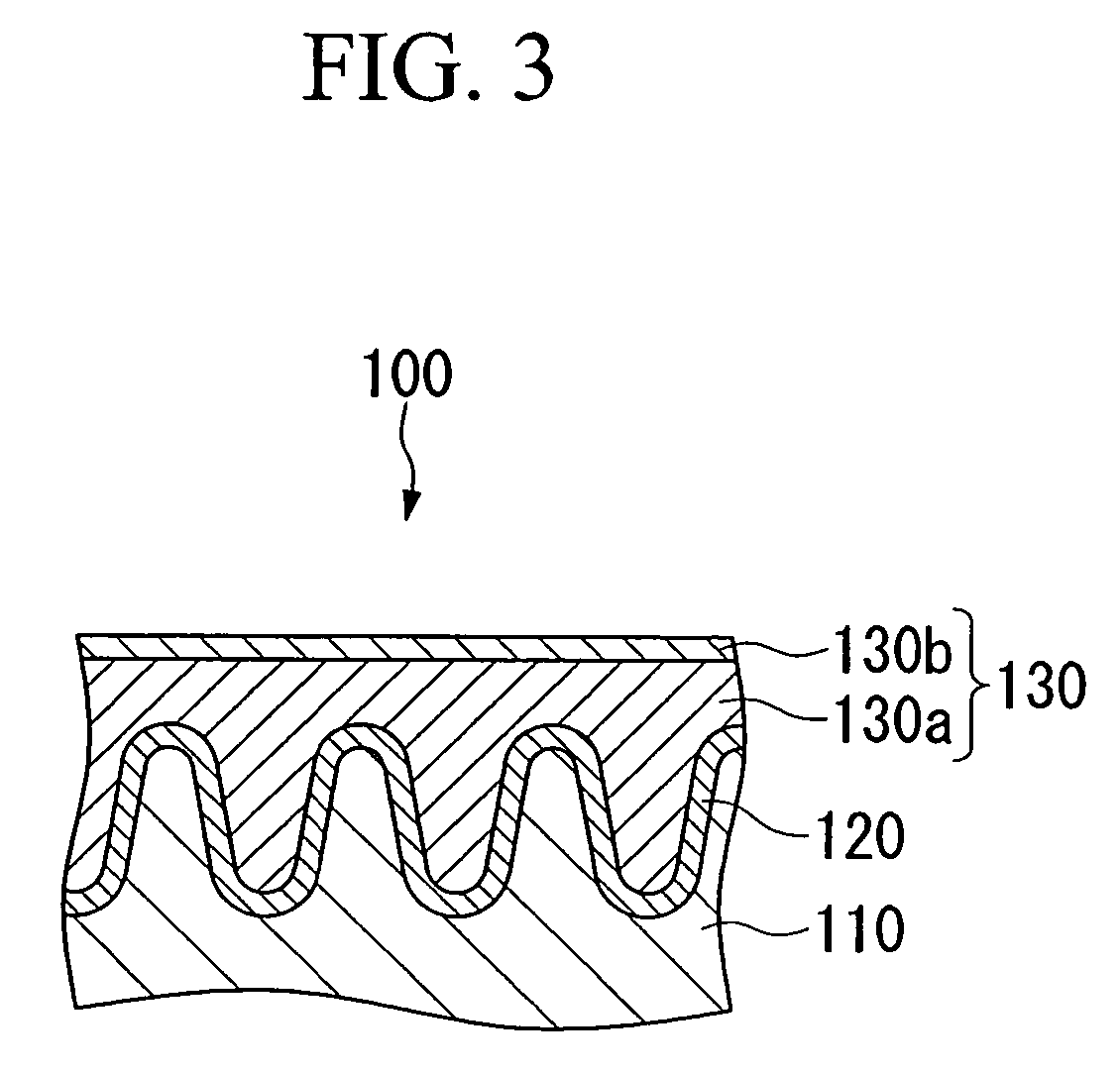Conductive composition and production method thereof, antistatic coating material, antistatic coating, antistatic film, optical filter, and optical information recording medium, and capacitors and production method thereof
a technology of antistatic coating and composition, which is applied in the direction of non-metal conductors, conductors, electrolytic capacitors, etc., can solve the problems of difficult mass production, difficult to form a uniform film of a conjugated conductive polymer, and difficult to achieve high conductivity, etc., to achieve excellent conductivity, simple production method, and easy mixing with essential components
- Summary
- Abstract
- Description
- Claims
- Application Information
AI Technical Summary
Benefits of technology
Problems solved by technology
Method used
Image
Examples
preparation example 1
Synthesis of Poly(Ethyl Methacrylate Sulfonic Acid) (PMAS)
[0251]216 g of ethyl methacrylate sodium sulfonate was dissolved in 1000 ml of ion-exchanged water, 1.14 g of ammonium persulfate previously dissolved in 10 ml of water beforehand was added dropwise over 20 minutes while stirring at 80° C., and the mixture was continuously stirred for an additional 12 hours.
[0252]1000 ml of sulfuric acid diluted to 10% by weight was added to the obtained poly (ethyl methacrylate sodium sulfonate) solution, about 1000 ml of the solution was removed by an ultrafiltration method, 2000 ml of ion-exchanged water was added to the residue, and about 2000 ml of the solution was removed by the ultrafiltration method. The above ultrafiltration operation was repeated three times.
[0253]Subsequently, about 2000 ml of ion-exchanged water was added to the obtained filtrate and about 2000 ml of the solution was removed by the ultrafiltration method. This ultrafiltration operation was repeated three times.
[02...
preparation example 2
Synthesis of Polystyrene Sulfonic Acid
[0260]206 g of sodium styrene sulfonate was dissolved in 1000 ml of ion-exchanged water, 1.14 g of ammonium persulfate previously dissolved in 10 ml of water beforehand was added dropwise over 20 minutes while stirring at 80° C., and the mixture was continuously stirred for an additional 12 hours.
[0261]1000 ml of sulfuric acid diluted to 10% by weight was added to the obtained poly(sodium styrene sulfonate) solution, about 1000 ml of the solution was removed by the ultrafiltration method, 2000 ml of ion-exchanged water was added to the residue, and about 2000 ml of the solution was removed by the ultrafiltration method. The above ultrafiltration operation was repeated three times.
[0262]Subsequently, about 2000 ml of ion-exchanged water was added to the obtained filtrate and about 2000 ml of the solution was removed by the ultrafiltration method. This ultrafiltration operation was repeated three times.
[0263]Water in the obtained solution was remo...
preparation example 3
[0264]14.2 g of 3,4-ethylenedioxythiophene and a solution obtained by dissolving 36.7 g of polystyrene sulfonic acid in 2000 ml of ion-exchanged water were mixed at 20° C.
[0265]This mixed solution was maintained to 20° C., 29.64 g of ammonium persulfate dissolved in 200 ml of ion-exchanged water and 8.0 g of an oxidation catalyst solution of ferric sulfate were slowly added while stirring, and then the mixture was stirred and reacted for 3 hours.
[0266]2000 ml of ion-exchanged water was added to the obtained solution, and about 2000 ml of solution was removed by the ultrafiltration method. This operation was repeated three times.
[0267]200 ml of sulfuric acid diluted to 10% by weight and 2000 ml of ion-exchanged water were added to the obtained solution, about 2000 ml of the solution was removed by the ultrafiltration method, 2000 ml of ion-exchanged water was added to the residue, and about 2000 ml of the solution was removed by the ultrafiltration method. The above ultrafiltration o...
PUM
 Login to View More
Login to View More Abstract
Description
Claims
Application Information
 Login to View More
Login to View More - R&D
- Intellectual Property
- Life Sciences
- Materials
- Tech Scout
- Unparalleled Data Quality
- Higher Quality Content
- 60% Fewer Hallucinations
Browse by: Latest US Patents, China's latest patents, Technical Efficacy Thesaurus, Application Domain, Technology Topic, Popular Technical Reports.
© 2025 PatSnap. All rights reserved.Legal|Privacy policy|Modern Slavery Act Transparency Statement|Sitemap|About US| Contact US: help@patsnap.com



